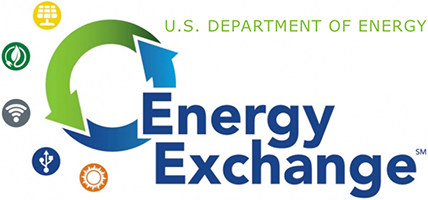Pittsburgh, PA

Executive Order 14057 sets a goal of a "net-zero emissions building portfolio by 2045, including a 50 percent emissions reduction by 2032." The Federal Sustainability Plan states that the federal government will work "across new building construction, major renovations, and existing real property to electrify systems, decrease energy use, reduce water consumption, and cut waste." To meet these aggressive goals, federal facility managers and operators require extensive whole-building and system-based modeling capabilities to analyze data and build custom solutions to achieve decarbonization. This session will explore numerous models available and an example of actual facility/campus modeling for decarbonization goal achievement.
Instructors
John Myhre, Project Manager, National Renewable Energy Laboratory Read Bio
John Myhre is a Project Manager for the National Renewable Energy Laboratory, where he supports the FEMP Utility, ESPC, and Distributed Energy Procurement Teams with training, technical assistance, and project feasibility reviews, as well as conducting research on decarbonization and the federal performance contracting industry. John has over 10 years of experience working on federal energy projects and in the construction industry, including serving at GSA as a mechanical engineer supporting deep energy retrofits and the Green Proving Ground technology validation program. John has an MBA from Loyola University of New Orleans and a Master of Mechanical Engineering degree from the University of California in Riverside.
Virak Dee, Senior Energy Engineer, Southland Industries Read Bio
Virak Dee is a licensed mechanical engineer with 24 years of experience in the energy efficiency and renewable energy field. Currently, he leads engineering efforts supporting federal and public sector projects in order to optimize payback and evaluate life-cycle scenarios of retrofit and new system installations. Mr. Dee has extensive experience auditing, designing, and implementing mechanical and electrical systems in federal, commercial, industrial, hospital, and various facilities. He utilizes industry standard and customized tools to model complex single whole-building site and district campuses along with the utility cost impacts. This approach informs the project stakeholders of the incremental energy states and costs of the baseline and subsequent efficiency and renewable conservation measures in order to achieve optimal payback and/or zero net-energy.
Learning Objectives
Upon completion of this course, attendees will be able to:
- Recognize and understand the different types of models available for use by agencies that help inform decarbonization strategies for their facilities and campuses;
- Identify the tools available from Department of Energy that inform strategies for renewables, decarbonization, and resiliency;
- Identify processes, challenges, and best practices from actual projects implemented to address efficiency and decarbonization;
- Recognize how energy modeling can help optimize facilities and enhance the performance of facilities.









